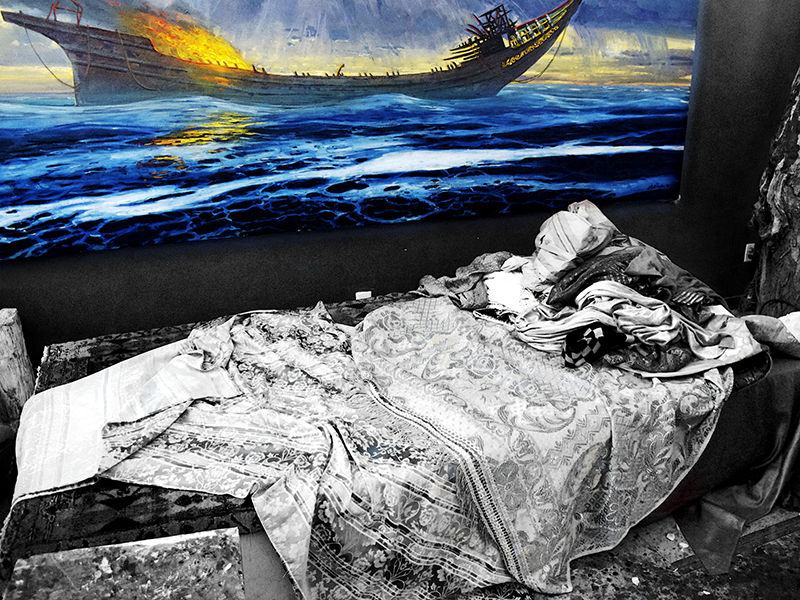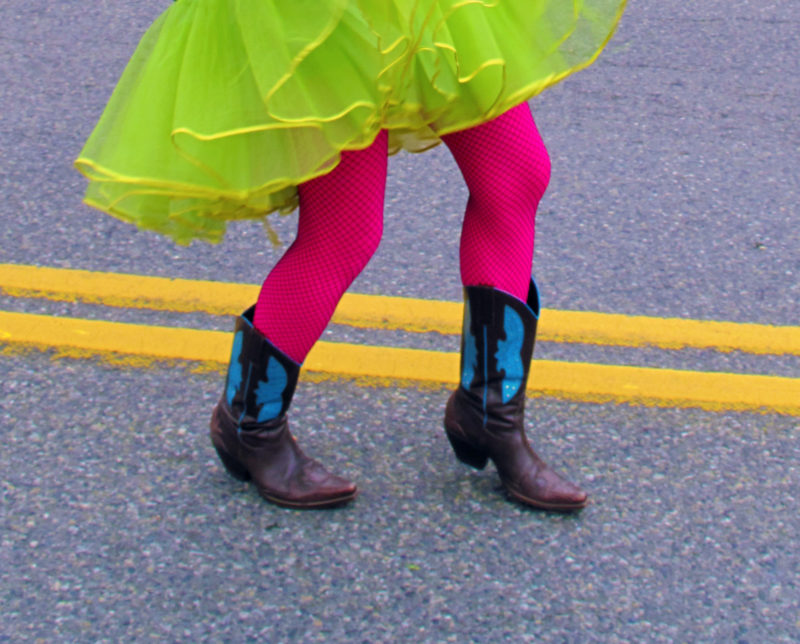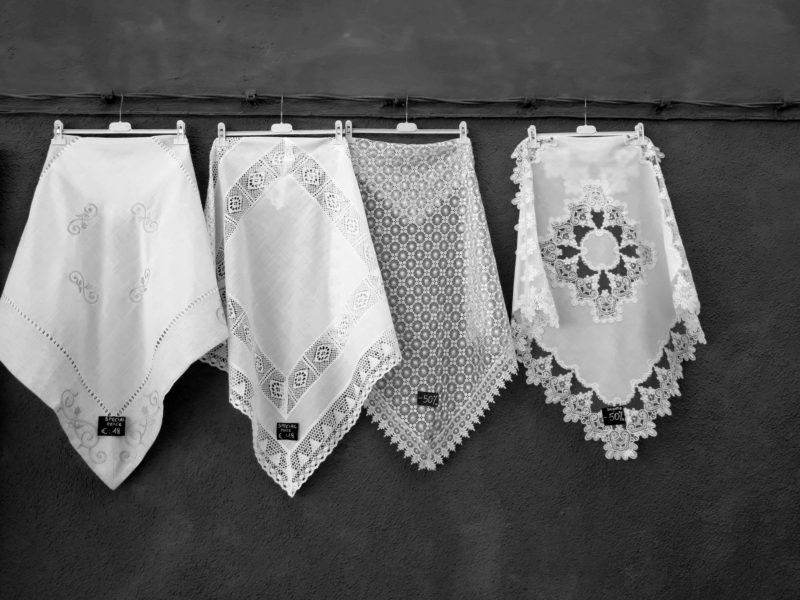Fabric in Contemporary Painting
· The brilliant work of Henk Pander ·

I can photograph art and fabric (see above, taken in Henk Pander’s studio), but I could never be a European art critic. I would die a premature death by choking on sentences like these: “At times it is silent and undefined and other times it narrates stories that are characterized by a deafening stillness, and yet, his paintings encompass a peaceful void that is marked by hints of playful elements throughout – entirely free of catharsis.” What does a void free of catharsis even mean??? This blurb by London-based Beers Gallery (actually an interesting place to learn about contemporary painters) referred to Sebastian Schrader, a relatively young German painter whose work I photographed at the last Biennale. http://www.sebastian-schrader.de/about.html He paints fabrics in the most photorealistic style, and they are almost drowning the figure(s) they surround. Not sure, though, when the peaceful void crosses the line to a vacuous piece…..

Compare this to a master of our very own, Portland-based Dutch painter Henk Pander – http://henkpander.format.com/#1, whose works can be described in very simple sentences. No obfuscation needed. The paintings are alive. They embrace light, color, and are steeped in art historical traditions. They lovingly depict their subjects without being saccharine. They have no need for meanness but can please with irony. You almost feel the painted fabrics and certainly feel the elegant brushstrokes. The narrative is often complex and thus intellectually challenging. My personal yardstick for a good painting is the question: if I laid eyes on this first thing every morning how long would it take me to get bored? In Henk’s case (and full disclosure, he is a dear friend) the answer would be: maybe around 3053 should this world and I still exist. Go see for yourself at the Portland Art Museum to experience the full impact of his artistry. Below are Life’s Reward, Portrait of Delores, (Henk’s beloved wife who passed some years ago,) and Prayer before the Night, respectively, courtesy of the artist.























 because it reminded me of the blond young man in my photograph. The latter might not be flying, but his hair is and his headband might just as well, given all the butterflies……
because it reminded me of the blond young man in my photograph. The latter might not be flying, but his hair is and his headband might just as well, given all the butterflies……




 Below is a painting of a sailor by Bohumil Kubista one of the founders of modern Czech painting. (
Below is a painting of a sailor by Bohumil Kubista one of the founders of modern Czech painting. (
 If you google Eugène Carrière and click on images you’ll face an astonishing array of somewhat monochromatic brown/sepia/beige/black paintings. Lots of them, and all a little bit mysterious, glowing, or, as Wikipedia describes it, with a misty color scheme. I had first seen his famous portrait of Paul Verlaine at the Musée d’Orsay and then encountered the one below, of Alphonse Daudet, in some small museum in San Antonio, Tx.
If you google Eugène Carrière and click on images you’ll face an astonishing array of somewhat monochromatic brown/sepia/beige/black paintings. Lots of them, and all a little bit mysterious, glowing, or, as Wikipedia describes it, with a misty color scheme. I had first seen his famous portrait of Paul Verlaine at the Musée d’Orsay and then encountered the one below, of Alphonse Daudet, in some small museum in San Antonio, Tx.


 ( Music here:
( Music here: